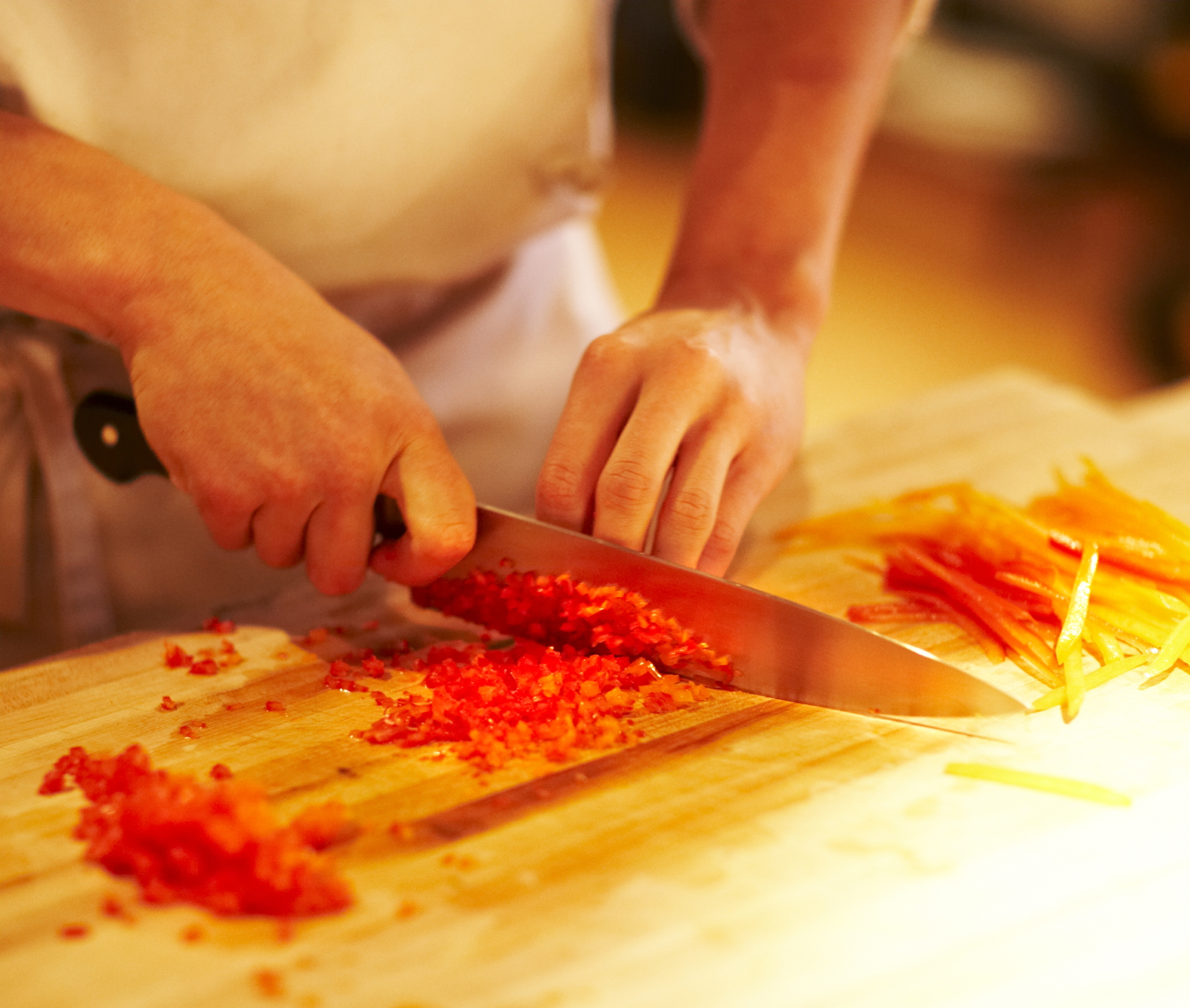Blog

A sharp kitchen knife is a good investment. Good knives make cooking easier and most importantly, sharp knives are safer than dull ones. A sharp knife is going to do what you expect it to do. It will slide smoothly through foods and not slip or get caught. When knives slip, that’s when cuts tend to happen.
You do not have to spend a lot of money to get a sharp knife. If you purchase a knife at a discount store for five or ten dollars it will likely stay sharp for six months to a year. At this price point, you would likely replace the knife when it got dull. If you are looking to spend a little more money for a heavier duty knife in the fifteen to thirty dollar range, you can also purchase a knife sharpener for around $20. With regular sharpening every few months, you can keep a knife in good condition for many years.
Sharpness isn’t the only concern when dealing with knives. There are a few safety principles that every cook should know to stay safe around knives.
S – Securely hold your knife. Grip the top of the blade firmly between your thumb and forefinger. Cut things on a flat surface like a cutting board. Do not cut things while you hold them in your hand.
A – Anchor all cutting boards to ensure they don’t slip. If your cutting board easily slides on the counter, put a damp cloth underneath it, this will help it grip.
F – Fingertips should be curled back. Hold foods with fingertips tucked under away from the knife.
E – Eyes on the knife! When using a knife, try to avoid distractions and keep your eyes on what you’re doing. It is also a good idea to keep knives where they are clearly visible, for example, do not put a knife in a sink full of dirty dishes where someone may not know it is there.
T – Take your time. Don’t rush with a knife.
Y – Yield to falling knives. If a knife slips out of your hand or falls from the counter, let it drop. Do not attempt to catch it. This is why it is a good idea to wear closed toe shoes in the kitchen.
There is no reason to fear knives or cooking. Knife safety is as simple as following a few basic rules.
Credit: Utah State University Extension Tips for Teaching Knife Skills
